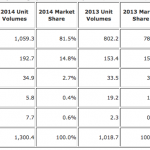Vimeo vs. YouTube: Key variations Between Two prime Video Channels
February 23, 2015
“What are the primary variations between YouTube and Vimeo, from a business proprietor’s standpoint?”
We hear this question continuously from trade other people who’re using video and need to be certain that they are being smart about it. the rules and issues are just a little completely different for a company than they could be for a movie student or a casual user who just wants to share vacation movies with pals.
the primary differences between these two prime video sharing web sites come right down to content regulate and purposes of use. There’s little downside to having an account with both, and plenty of companies do, together with us…
YouTube
- YouTube is just about huge open on each ends – any individual can use it for anything in need of porn, however controlling get admission to and sharing of your work is harder to regulate.
- YouTube is free to use, which is why it desires to indicate advertisements earlier than/all over/after videos or it limits one of the crucial options available to you. keep in mind that, in case you use a free provider, you are not in point of fact the user, you’re the product.
- Google owns YouTube, so the seo advantages for properly optimized movies are beautiful impressive.
- Digital Bard uses YouTube for our consumer’s movies almost exclusively on account of straightforward person get admission to and compatibility with other software and products and services (like newsletters, websites, and cellular apps).
Vimeo
- Vimeo has superior visual and content material organizational controls, however has more limitations on who can use it for what on a free account.
- A paid “Vimeo professional” account (presently $ 199/yr.) is truly the right kind possibility for commercial use and is a superb worth for what you gain.
- Vimeo has a lot of aesthetic design controls, together with matching the participant colours to your model and defining if controls for quantity, repeat, time, and so forth. are over-layed on the video.
- There are enhanced privacy controls and no advert overlays on Vimeo.
- For subject material specialists (SME), Vimeo bargains options for paid “Video on Demand” microsites.
other video sharing options
there are lots of different video sharing web sites, and sites that aren’t primarily for video sharing however nonetheless offer that possibility. if you want to maximize your video publicity, believe posting it directly to your facebook page (as opposed to linking it). beginning in the final quarter of 2014, we began to see important shifts in engagement with facebook movies, such that some SuperBowl ads were seen via extra individuals on facebook than after they aired on tv!
also consider the usage of Instagram, your Flickr account, or link to video from LinkedIn or Twitter. We mention these first as a result of they are bills you may also already be using however just by no means thought of them for video.
further posting or linking opportunities on your movies could include Viddler, Blip.tv, Veoh and Photobucket. simply know that each web page has some content material ideas (for instance, Blip.tv is for internet collection) however it can be good for your audience.
And one ultimate choice is also to use a carrier like OneLoad (previously TubeMogul) to lend a hand distribute your video to a couple of web sites with one login and upload. It’s more or less like HootSuite for video publishing, and it’s a paid carrier, however if you happen to’ve received quite a few video content material to get out, it may be a huge timesaver and it comes with some analytics that you could be find very useful.
simply recognize the differences and blend-and-healthy subsequently. satisfied publishing!
Digital & Social Articles on industry 2 community
(153)









